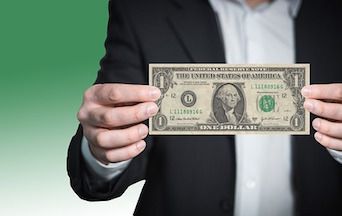What Is Your Practice Worth?
The key is to remember that a veterinary practice is only worth as much as someone is willing to pay for it, and what it’s worth to one person could well be different than what it’s worth to someone else.

Whether you’re a buyer or a seller, now is a good time to have an interest in the veterinary medicine market. “The industry benefits from strong fundamentals, consistent growth, recession-resilient characteristics and no reimbursement risk,” according to a 2016 report from investment banking firm Harris Williams & Co. And comparable to human demographics, the report notes that an “aging pet population requires more costly and frequent care, driving overall growth in veterinary healthcare.”
According to Dunn & Bradstreet’s Veterinary Services Industry Profile from August 2017, “The U.S. veterinary medical services industry includes about 31,000 establishments (single-location companies and units of multi-location companies) with combined annual revenue of about $35 billion.”
According to Leslie Mamalis, MBA, MSIT, CVA, owner and senior consultant at Colorado-based Summit Veterinary Advisors, “A practice is only worth what someone is willing to pay for it, and any given practice might be worth different amounts to different people.” This is particularly true, she says, when a corporate consolidator is interested in the practice. “These buyers have deeper pockets than private veterinarians and different strategic goals when acquiring practices.”
RELATED:
- When Should You Sell Your Veterinary Practice?
- Should You Sell Your Practice Privately or Corporately?
This begs the question: How is the value of a practice determined?
The answer, says Mamalis, lies largely in the profits generated by the practice over the years and the likelihood that those profits will continue to be earned in the future. “Generally speaking, practices with more profit are worth more than those with lower levels of profit,” she says, but whether a buyer can count on those future profits is based on a number of factors.
“Internal factors can include the volatility of historical profits, the growth rate, the quality of staff, the quality and type of equipment in the practice, the ability of the seller to transfer goodwill to the buyer, the revenue sources, the quality of the facility and the management systems in place,” says Mamalis. All these factors can be controlled by the practice.
External factors that can influence risk, she says, “include the demographics of the community, the number and quality of veterinary competitors, the terms of the facility lease, the location of the business and the likely number of potential buyers. These factors exist outside the control of the practice, but will be similar for every practice in a given geographic area.”
The bottom line is that the best way to gauge the real value of your practice is to understand its true profitability and the relative risk compared with similar practices in your area. Mamalis recommends engaging with a professional veterinary business appraiser to help with these assessments.
Finally, she says, “it’s worthwhile to have a professional assessment done several years prior to selling a practice. In many cases, if the appraised value of your business is not where you want it to be, you will still have time to make improvements that can help increase the practice value (and the selling price) prior to the time of sale.”
Greg Kelly is a long-time health care writer and editor. He has written for Physician’s Money DigestTM, Dentist’s Money DigestTM and Veterinarian’s Money Digest® websites. He lives at the Jersey Shore and welcomes comments at gregkelly@monmouthbeachlife.com.